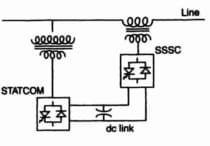1. In dielectric heating current flows through_________.
a. Dielectric
b. Air
c. Ionic discharge between dielectric medium and metallic conductor
d. Metallic conductor
2. The power will be maximum in case of____________.
a. Resistance heating
b. Electric arc heating
c. Dielectric heating
d. Induction heating
3. Furnaces used for cremation are__________.
a. Electric arc heating
b. Electric resistance heating
c. High frequency eddy current heating
d. Dielectric heating
4. Hysteresis loss and eddy current loss are used in_________.
a. Dielectric heating
b. Resistance heating
c. Induction heating of brass
d. Induction heating of steel
5. The power factor will be leading in case of________.
a. Resistance heating
b. Electric arc heating
c. Dielectric heating
d. Induction heating
6. The method appropriate for heating of non-ferrous metals is_______.
a. Radiant heating
b. Indirect arc heating
c. Dielectric heating
d. Indirect resistance heating
7. The method suitable for heating of conducting medium is________.
a. Indirect arc heating
b. Induction heating
c. Radiant heating
d. Eddy current heating
8. The most modern method for food processing___________.
a. Resistance heating
b. Induction heating
c. Eddy current heating
d. Dielectric heating
a. Heating occurs in the
material itself
b. It can be used for drying the explosives
a. Soldering
b. Gluing of wood
c. Diathermy
d. Food processing
11. The metal surfaces for electrical resistance welding must be_______.
a. Lubricated
b. Cleaned
c. Rough
d. Moistened
12. Resistance welding cannot be used for________.
a. Non-ferrous materials
b. Ferrous materials
c. Dielectrics
d. Any of the above
13. Resistance to the flow of current is made of_________.
a. Resistance between the contact surfaces of the parts being welded
b. Resistance between the electrodes and the surface of the parts being welded
c. Resistance of current path in the work
d. All of the above
d. High initial as well as
maintenance cost
c. 25 mm
d. 40 mm
16. In flash-butt welding__________.
a. Power requirement is less
b. Clean and pure weld is obtained
c. No special preparation of the faces to be welded is necessary
d. All of the above
c. Both (a) and (b)
d. Ohmic resistance
18. In spot welding, composition and thickness of the base metal determines the_______.
a. Amount of weld current
b. Amount of squeeze pressure
c. Holding time
d. All of the above
c. Copper alloy or pure copper
d. Carbon
20. During spot welding, the current flows for_______.
a. Few microseconds
b. Few milliseconds
c. Fraction of a second to
several seconds
d. Fraction of minute
21. Spot welding__________.
a. Provides mechanical
strength
b. Makes the weld water tight
c. Makes the weld air tight
d. All of the above
22. Projection welding can be considered as a mass production form of_________.
a. Flash welding
b. Upset welding
c. Spot welding
d. Scam welding
23. In seam welding__________.
a. The electrodes used are of disc or roller shape
b. The workpiece moves but rotating electrodes are fixed
c. The workpiece is fixed and disc electrodes move
d. Either (a) or (b) and (c)
c. Seam
d. Both spot and seam
25. Seam welding is normally not recommended for____________.
a. Alloys of nickel and magnesium
b. Copper and high copper
alloys
c. Stainless and coated steels
d. Aluminium alloys
26. The basic electrical requirement in arc welding is that there should be__________.
a. Coated electrodes
b. DC power supply
c. No arc below
d. High open-circuit voltage
- Electric Drives and Motors MCQ Part-1
- Electric Drives and motors MCQ Part-2
- Electric Drives and Motors MCQ Part-3
- Electric Drives and Motors MCQ Part-4
- Electric Drives and Motors MCQ Part-5
- Electric Drives and Motors MCQ Part-6
- Electric Drives and Motors MCQ Part-8
- Electric Drives and Motors MCQ Part-9
- Electric Drives and Motors MCQ Part-10





0 Comments
If you have any doubt, feel free to ask.